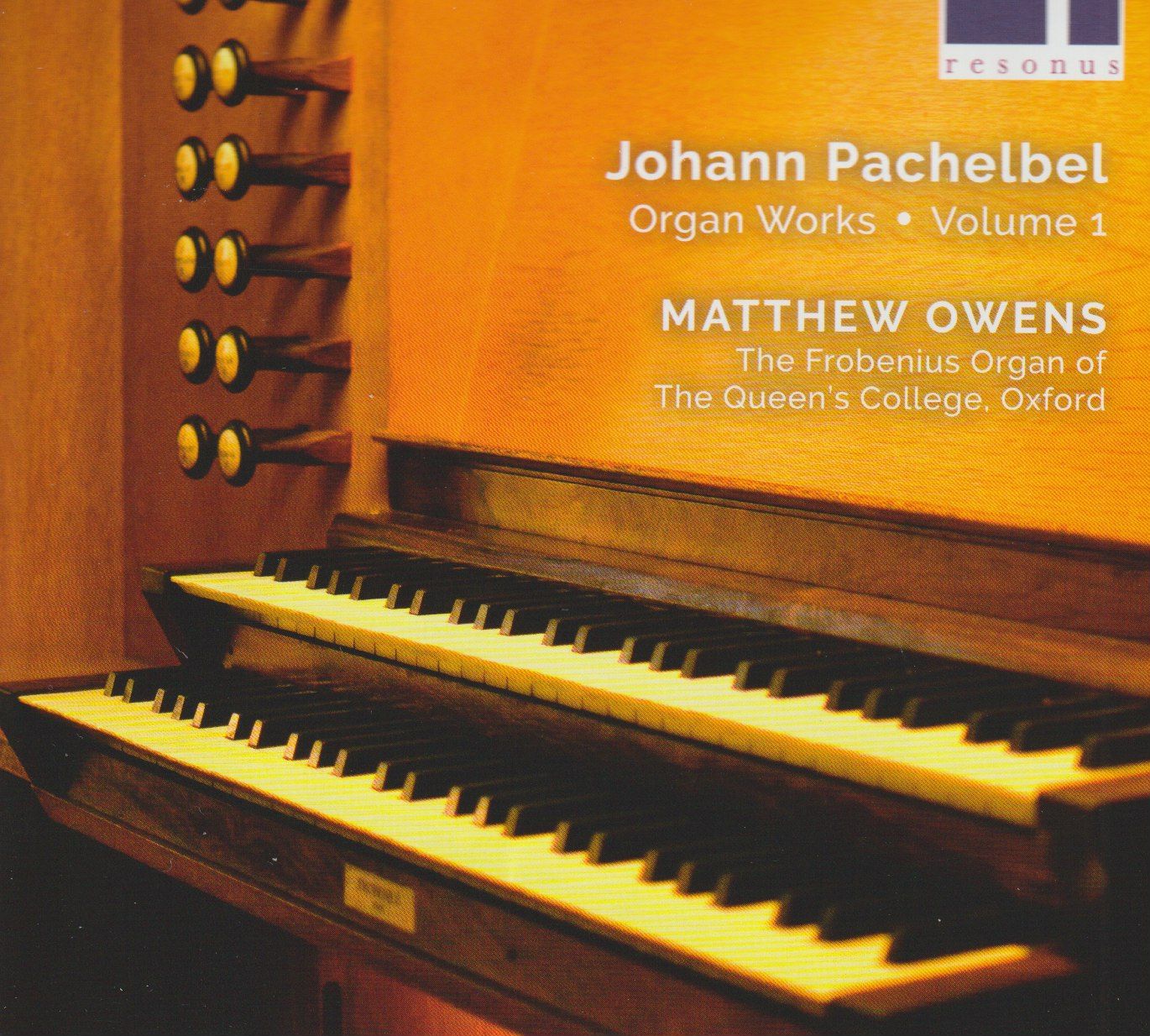Matthew Owens launches his series of Pachelbel Organ Works
Owen's combination of clarity of texture and of thought is a winning one

This disc is recorded on the Theodore Forbenius Organ of The Queen's College, Oxford, an instrument commissioned by James Dalton in 1962 ad completed in 1965 (with organ case designed by Fin Ditlevsen), an instrument that became a landmark for the classical organ revival in England. It is a two manuals and pedal instrument designed for the acoustics of the chapel in which it is housed - which results in pristine clarity, a trait supported by Resonus Classics' recording.
First, though, to Johann Pachelbel (1652-1706) - he of the famous Canon. A composer of the so-called "middle Baroque" and a close contemporary of Buxtehude, Pachelbel'smusic is often associated with the South German organ schools - somewhat rhapsodic as opposed to the stricter counterpoints of the North German Baroque. Think of the Baroque freedoms of Frescobaldi (see our post here for some examples) and Froberger (again, see this post).
Small organ though it might be, there is a lovely clarity here - as there is to Owens' fingerwork. Try the first piece, the Prelude in D minor, P407:
One of the most stimulating works here, intellectually and emotionally, is the Chorale Partita, "Ach, was soll ich Sünder machen" (). A chorale partita is a hybrid form, the chorale - a form made universally famous by Bach - subjected to a series of variations, here six "Partitas"; and so the North German chorale meets Italianate variations. The piece is masterly, as is Matthew Owens' performance. Here's the Chorale:
... and here's Partita III:
The set of twelve Magnificat Fugues on the fifth tone are simply beautiful. Owens finds the perfect mode of delivery, and that clarity of both recording, acoustic and performer really pays off. Here's the second Fugue, and just listen to the restrained joy implicit here:
While it is true Pachelbel is best known for his Canon, anotehr piece has achieved at least a measure of fame: The Ciacona in F minor, P 43. F minor was unusual for 1700, as was perhaps teh disjunct nature of some of the melodic writing. The whole is suffused with melancholy. Owens' playing is magnificent: unhurried - and he does not distort the line as many organists are wont to do:
An expansive work, it seems to demonstrate organic growth, while the Chorale Partita "Was Gott tut, es ist wohlgetan" balances that on "Ach, was soll ich Sünder machen" beautifully, but it is quite right that Owens ends on the brilliant chorale, "Ein feste Burg ist unser Gott":
A warmly performed, beautiful disc. Owen's combination of clarity of texture and of thought is a winning one.
